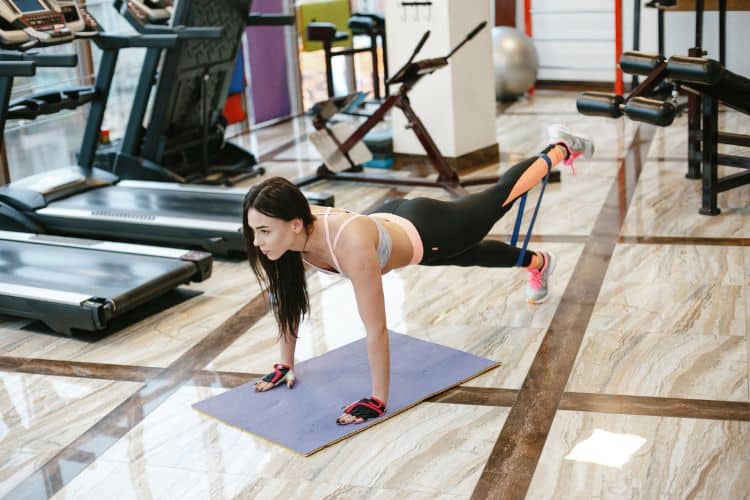High Intensity Cardio Workout To Get Your Heart Pumping
In today’s fast-paced world, finding time for exercise can be challenging. That’s why high-intensity cardio workouts (HIIT) have surged in popularity—they deliver exceptional fitness results in a fraction of the time compared to traditional steady-state cardio. Whether you’re a busy professional, an athlete, or someone looking to break through a fitness plateau, incorporating high-intensity cardio can revolutionize your training.
High-intensity interval training (HIIT) alternates between short bursts of maximum effort and brief recovery periods, keeping your heart rate elevated and maximizing calorie burn. Unlike long, monotonous cardio sessions, HIIT is dynamic, engaging, and highly effective for fat loss, endurance, and overall fitness.
In this comprehensive guide, we’ll dive deep into the science behind high-intensity cardio, explore its numerous benefits, provide a variety of workout plans for different fitness levels, and offer expert tips to optimize your performance.
What is High Intensity Cardio Workout?
High-intensity cardio is a training method that involves short, explosive bursts of exercise followed by periods of rest or low-intensity recovery. The key principle is pushing your body to near-maximum effort (80-95% of your max heart rate) for brief intervals, then allowing just enough recovery to repeat the cycle.
Key Characteristics of High-Intensity Cardio:
- Short Duration (10-45 minutes) – Efficient and time-saving.
- Max Effort Intervals – Requires pushing yourself to near-exhaustion.
- Active or Passive Recovery – Walking, slow jogging, or complete rest between sets.
- Versatile & Adaptable – Can be done with bodyweight, weights, or cardio machines.
- EPOC Effect (Afterburn) – Continues burning calories post-workout.
Types of High-Intensity Cardio Workouts:
- Tabata Training – 20 seconds work, 10 seconds rest (8 rounds).
- AMRAP (As Many Rounds As Possible) – Complete as many rounds of a circuit in a set time.
- EMOM (Every Minute on the Minute) – Perform a set number of reps at the start of each minute.
- Circuit Training – Rotating through different exercises with minimal rest.
Science-Backed Benefits of High Intensity Cardio Workout
1. Superior Fat Burning & Weight Loss
Multiple studies show that HIIT burns more fat in less time than steady-state cardio. A 2019 study in the British Journal of Sports Medicine found that HIIT reduces body fat significantly more than moderate-intensity exercise.
Excess Post-Exercise Oxygen Consumption (EPOC) means your body continues burning calories for hours after the workout. Research indicates EPOC can elevate metabolism for up to 48 hours post-HIIT.
3. Improved Cardiovascular Health
HIIT enhances heart function, lowers blood pressure, and increases VO2 max (oxygen efficiency). A study in Circulation found that HIIT improves heart health more effectively than moderate exercise.
4. Preserves Muscle Mass
Unlike prolonged cardio, which can lead to muscle breakdown, HIIT promotes fat loss while maintaining lean muscle. This makes it ideal for those looking to get lean without losing strength.
5. No Equipment Necessary
Many HIIT workouts require only bodyweight, making them accessible for home workouts, travel, or outdoor training.
6. Time-Efficient
A 20-minute HIIT session can be more effective than an hour of steady-state cardio, perfect for busy schedules.
HIIT improves both aerobic and anaerobic capacity, making it beneficial for runners, cyclists, and athletes.
Best High Intensity Cardio Workout Exercises
Bodyweight Exercises (No Equipment Needed)
- Burpees – Full-body explosive movement.
- Jump Squats – Builds lower-body power.
- Mountain Climbers – Engages core and boosts heart rate.
- High Knees – Great for agility and endurance.
- Sprint Intervals – Run at max speed for short bursts.
Equipment-Based Exercises (Gym or Home)
- Battle Ropes – Full-body conditioning.
- Rowing Machine Sprints – Low-impact, high-intensity.
- Kettlebell Swings – Explosive hip-driven movement.
- Box Jumps – Plyometric power builder.
- Spin Bike Intervals – High-resistance cycling sprints.
Sample High-Intensity Cardio Workouts
Beginner HIIT Workout (20 Minutes)
- Warm-Up: 5 min (jumping jacks, dynamic stretches)
- Workout: 30 sec work, 30 sec rest (repeat 4x per exercise)
- Bodyweight Squats
- Push-Ups (knees or incline if needed)
- Jump Rope (or simulated jumps)
- Plank Hold
- Cool Down: 5 min (stretching)
- Warm-Up: 5 min (dynamic movements)
- Workout: 40 sec work, 20 sec rest (3 rounds)
- Burpees
- Kettlebell Swings
- Mountain Climbers
- Box Jumps (or step-ups)
- Battle Ropes
- Cool Down: 5 min (foam rolling & stretching)
Advanced HIIT Workout (45 Minutes – EMOM Style)
- Warm-Up: 10 min (jogging, mobility drills)
- Workout: Perform at the start of every minute for 10 rounds:
- Min 1: 15 Calorie Row (or sprint)
- Min 2: 20 Wall Balls
- Min 3: 15 Deadlifts (moderate weight)
- Min 4: 30 Double-Unders (or 60 singles)
- Cool Down: 10 min (deep stretching)
How to Optimize Your HIIT Routine for Maximum Results
1. Proper Warm-Up & Cool-Down
- Warm-Up: 5-10 min of dynamic stretches (leg swings, arm circles, lunges).
- Cool-Down: 5-10 min of static stretching & deep breathing.
2. Track Intensity with Heart Rate Monitoring
- Max HR Formula: 220 – age.
- Target Zone: 80-95% of max HR during work intervals.
3. Progressive Overload (Increase Difficulty Over Time)
- Add resistance (weighted vest, dumbbells).
- Reduce rest periods.
- Increase sprint speed or jump height.
- Pre-Workout: Carbs + protein (oatmeal & whey protein).
- Post-Workout: Protein shake + complex carbs (chicken & quinoa).
- Hydration: Drink water with electrolytes during long sessions.
5. Recovery & Avoiding Overtraining
- Limit HIIT to 3-4x per week.
- Incorporate active recovery (yoga, walking, swimming).
- Get 7-9 hours of sleep for muscle repair.
Common High Intensity Cardio Workout Mistakes & How to Avoid Them
1. Skipping Warm-Up/Cool-Down
- Risk: Increased injury chance.
- Fix: Always dedicate 10 min to warm-up & cool-down.
- Risk: Joint strain or muscle tears.
- Fix: Focus on technique before increasing intensity.
3. Overtraining
- Risk: Burnout, fatigue, decreased performance.
- Fix: Schedule rest days and listen to your body.
4. Not Adjusting for Fitness Level
- Risk: Excessive soreness or discouragement.
- Fix: Modify exercises (e.g., step-backs instead of jump squats).
5. Neglecting Hydration & Nutrition
- Risk: Poor performance, dizziness, cramps.
- Fix: Drink water before, during, and after workouts.
Is High-Intensity Cardio Workout Right for You?
Who Should Do HIIT?
- Those short on time but want maximum results.
- Athletes looking to improve speed & endurance.
- Individuals aiming for fat loss without muscle loss.
Who Should Avoid HIIT?
- People with heart conditions (consult a doctor first).
- Beginners (start with modified versions).
- Those with joint issues (low-impact alternatives recommended).
Action Plan For High Intensity Cardio Workout
High-intensity cardio is one of the most efficient ways to burn fat, boost endurance, and improve overall fitness. By following structured HIIT workouts, optimizing recovery, and avoiding common mistakes, you can achieve remarkable results in weeks.
Your 4-Week HIIT Plan:
- Week 1: 2-3 beginner HIIT sessions.
- Week 2: 3 intermediate sessions + strength training.
- Week 3: 3-4 advanced HIIT workouts.
- Week 4: Deload week (active recovery, yoga, light cardio).
Ready to transform your fitness? Pick a workout from this guide and start today!
FAQs
Q: How many calories does HIIT burn?
A: Depending on intensity, 300-600 calories in 30 minutes.
Q: Can I do HIIT every day?
A: No—3-4x per week is optimal to prevent overtraining.
Q: Is HIIT better for fat loss than running?
A: Yes, due to the EPOC effect and muscle retention.
Q: How soon will I see results?
A: With consistency, noticeable changes in 4-6 weeks.
Now it’s your turn! Which HIIT workout will you try first? Share in our social media comments!
Most Recommended





